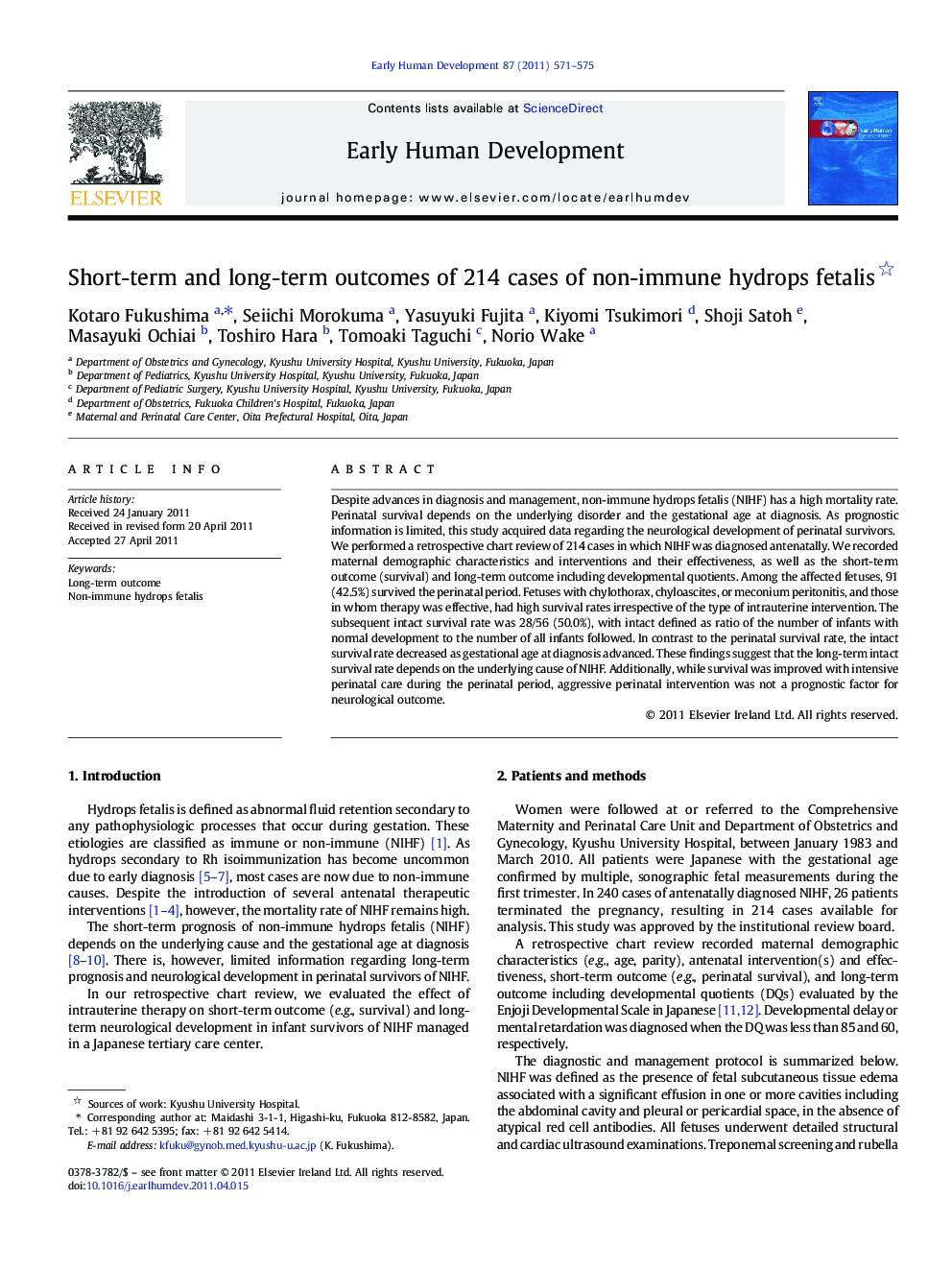| Article ID | Journal | Published Year | Pages | File Type |
|---|---|---|---|---|
| 3917083 | Early Human Development | 2011 | 5 Pages |
Despite advances in diagnosis and management, non-immune hydrops fetalis (NIHF) has a high mortality rate. Perinatal survival depends on the underlying disorder and the gestational age at diagnosis. As prognostic information is limited, this study acquired data regarding the neurological development of perinatal survivors.We performed a retrospective chart review of 214 cases in which NIHF was diagnosed antenatally. We recorded maternal demographic characteristics and interventions and their effectiveness, as well as the short-term outcome (survival) and long-term outcome including developmental quotients. Among the affected fetuses, 91 (42.5%) survived the perinatal period. Fetuses with chylothorax, chyloascites, or meconium peritonitis, and those in whom therapy was effective, had high survival rates irrespective of the type of intrauterine intervention. The subsequent intact survival rate was 28/56 (50.0%), with intact defined as ratio of the number of infants with normal development to the number of all infants followed. In contrast to the perinatal survival rate, the intact survival rate decreased as gestational age at diagnosis advanced. These findings suggest that the long-term intact survival rate depends on the underlying cause of NIHF. Additionally, while survival was improved with intensive perinatal care during the perinatal period, aggressive perinatal intervention was not a prognostic factor for neurological outcome.
